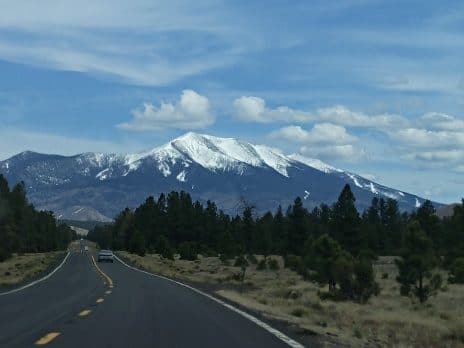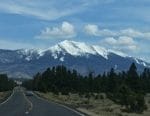Elevation models

Use of digital elevation models with remotely sensed satellite images
There are several landscape characteristics in arid regions that impact the trafficability of an area including vegetation cover (the type and amount) and the topography (level ground, gentle slopes, drainages, hills, or mountains). Remotely sensed satellite images can help detect, map, and monitor vegetation cover and dynamics, however, the images are presented in 2-D or XY coordinates. Combining remotely sensed satellite images with a Digital Elevation Model (DEM) allows the analyses to include the Z or topographic component. The topography is important for several reasons including how easy or difficult it is for people to move around either in a vehicle or by foot (trafficability). To help with the analyses of how to detect, map, and monitor the travel network using remote sensing within and around the Sonoran Desert National Monument (SDNM) in southern Arizona 0.5 meter panchromatic satellite images were combined with existing Digital Elevation Models (DEMs) of the region. DEMs with 10 meter resolution were used to generate both 3D terrain models and stereo digital image maps to analyze in both hardcopy and digital formats.

Besides applications related to trafficability DEMs are also useful for some aspects of vegetation analyses. It is well known that there are relationships between slopes, aspect, and elevation to vegetation type, cover, and health. Also, the information related to drainages, washes, slopes, and vegetation ground cover variability can be used to get information related to both hydrologic flow and potential wildlife habitats. The topographic component can add to the type and accuracy of the analyses used on the remotely sensed images.

The 2D map shown here was made using portions of the Vekol Valley and Table Top areas of interest. It includes some of the more steeper terrain in the Table Top Wilderness area. It is a good example of combining the DEM of the area with the 0.5m panchromatic satellite image.
The magenta and turquoise boxes within the map are for areas where sub-areas are zoomed in to view the image in 3D at a higher resolution. Click on the links below to see the higher resolution stereo/anaglyph scene of the corresponding area. Note a pair of red/cyan glasses (with the red lens over the left eye) is needed for 3D viewing.

Location C, Scale approximately 1:6,000
A canyon/drainage and trail area off the
southwest slopes of Table Top Mountain
 Location E, Scale approximately 1:6,000
Location E, Scale approximately 1:6,000
A small canyon and ridge area northwest of Table Top Mountain.